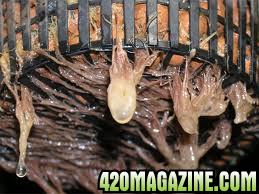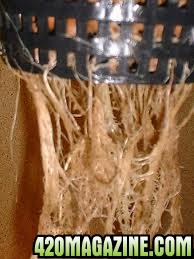SmokzAlot
New Member
Brewing Beneficial Tea for your DWC
Why?
Root enhancement and biological control of various conditions that can slime a good grow. A hands on tutorial sort of on how to manage and maintain the system.
Most DWC or bucket bubblers tend to be hard to control temps of the res. This no longer becomes a major issue for the home DIY grower. Use this Tea Bag method in a large multi bucket system or a single. Just as effective.
I thought this would be a great topic for conversation as well as a refresh of what we know and have learned. As well as share with others.
Slime!
Most of us have seen it. or know someone that had it, or has been devastated by it, or learned to manage it. Herein is a method to take care of business at minimal cost, but yet just as effective as commercial solutions like Great White. Maybe even better, for darn sure pennies per application in comparison.



If you are familiar with this concept you know that we are talking about growing and distributing beneficial bacteria and fungi to our root zone and water supply.
Choice in managing a DWC or any hydroponic grow is either run a sterile system of a beneficial system. This thread will address the Beneficial side of this issue. This method will help you recover from a slime attack as well as prevent. It can also be applied to your cloning process as well. I would recommend if you run it in a NFT or drip system that you strain the tea before applying.
Who's on board?

Why?
Root enhancement and biological control of various conditions that can slime a good grow. A hands on tutorial sort of on how to manage and maintain the system.
Most DWC or bucket bubblers tend to be hard to control temps of the res. This no longer becomes a major issue for the home DIY grower. Use this Tea Bag method in a large multi bucket system or a single. Just as effective.
I thought this would be a great topic for conversation as well as a refresh of what we know and have learned. As well as share with others.
Slime!
Most of us have seen it. or know someone that had it, or has been devastated by it, or learned to manage it. Herein is a method to take care of business at minimal cost, but yet just as effective as commercial solutions like Great White. Maybe even better, for darn sure pennies per application in comparison.



If you are familiar with this concept you know that we are talking about growing and distributing beneficial bacteria and fungi to our root zone and water supply.
Choice in managing a DWC or any hydroponic grow is either run a sterile system of a beneficial system. This thread will address the Beneficial side of this issue. This method will help you recover from a slime attack as well as prevent. It can also be applied to your cloning process as well. I would recommend if you run it in a NFT or drip system that you strain the tea before applying.
Who's on board?







 many thanks for this
many thanks for this 

